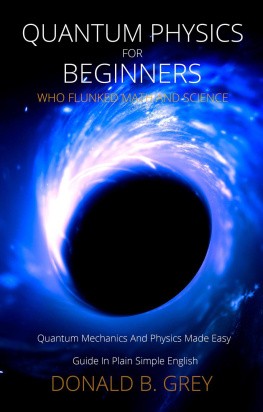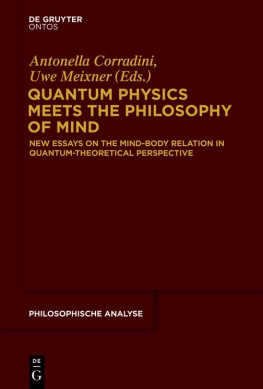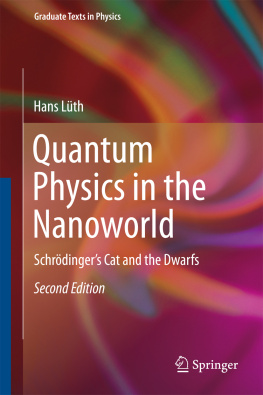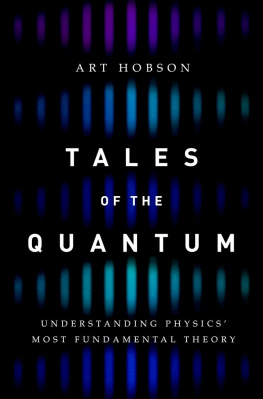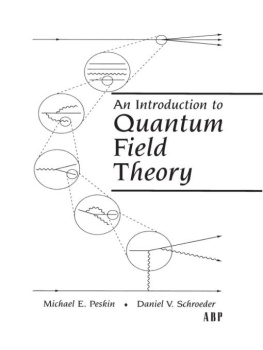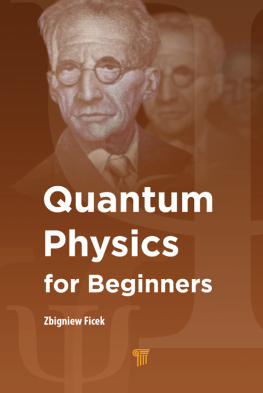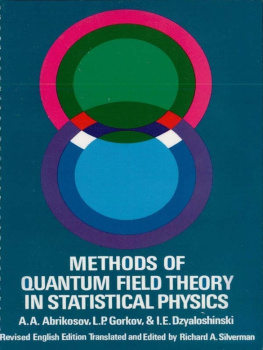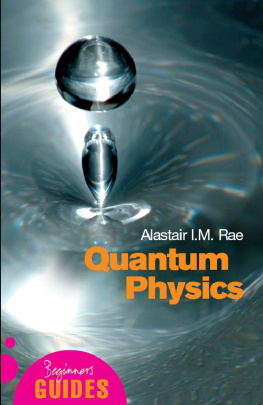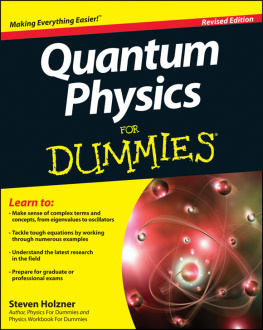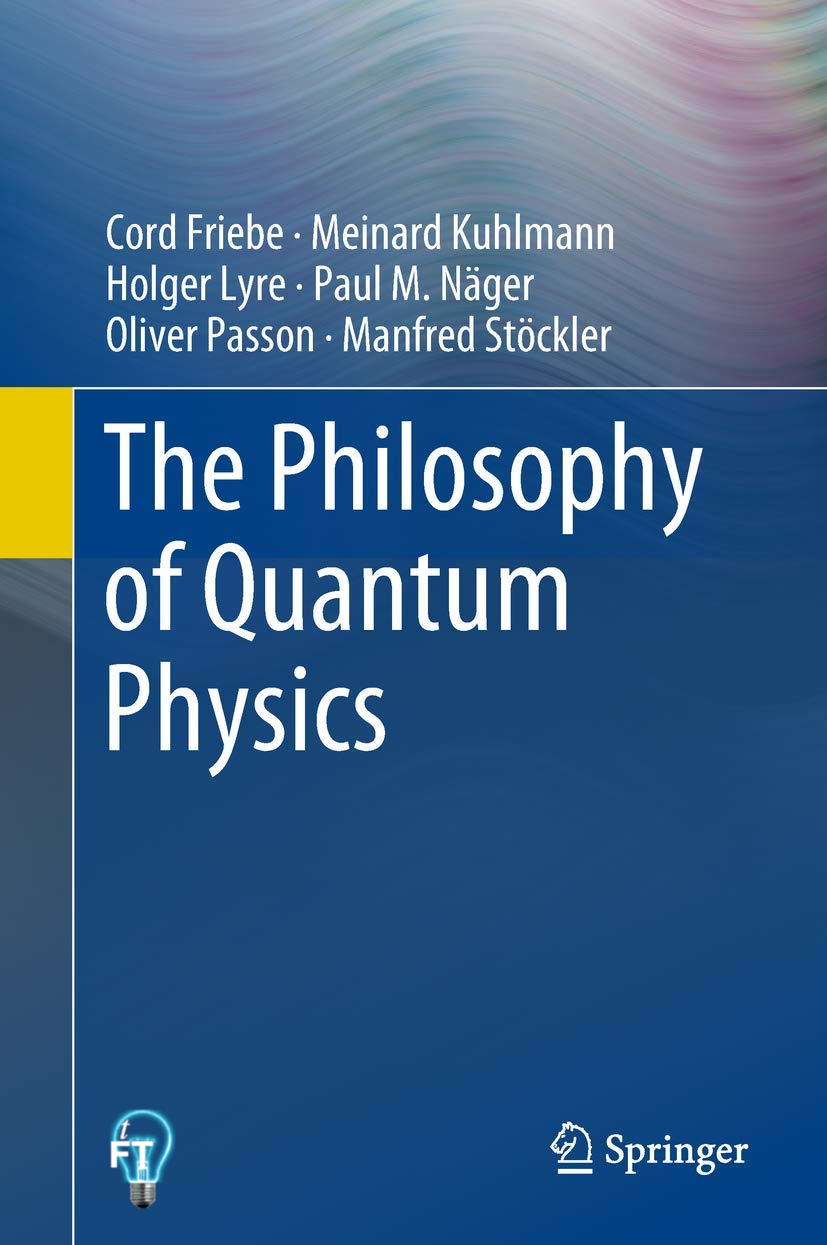Preface
The Philosophy of Quantum Physics grew out of an initiative by the Springer Spektrum publishers, for which we owe particular thanks to Dr. Vera Spillner. The task of coordinating the cooperation among the various authors and between authors and publisher was taken on by Cord Friebethe other authors wish to express their hearty thanks to him for these sometimes tedious efforts!
Our guiding principle has been to fill a gap in the textbook market which exists between general introductions to this field and specialized monographs. The large number of popular articles on the subject documents the great interest shared by a broad audience in the epistemological and ontological implications of quantum theory. Our goal was thus to provide a current and well-founded introduction to the philosophy of quantum theory for advanced students of philosophy with an interest in physics. At the same time, this book confronts students and practitioners of physics with the philosophical implications of their field. This book can also serve to provide new impulses for teacher education in the fields of philosophy and physics.
That there is a close interrelation between the two fields is well known and needs no special justification. This relationship always becomes particularly intensive during periods of rapid scientific development. New physical theories can challenge the prevailing philosophical view of reality and even cause revisions to it. At the same time, philosophy can make its contributions to a more precise understanding and interpretation of the scientific results. The upheavals in physics in the early twentieth century due to the developments of quantum mechanics and the relativity theories provide substantial evidence for this.
In the second half of the twentieth century, a new development began, and it led the philosophy of physics to become a highly professional and very lively branch of the philosophy of science; it had been dominated earlier by authors in the Anglo-Saxon world. Motivations coming from the physicists continue to play a certain role, but the mainstream of research is now carried on by those philosophers who have solid backgrounds in physics and who concentrate their work on the fundamental questions and philosophical problems of the respective physical theories. The results of this research are published and discussed in specialized journals. This professionalization has led to a situation in which the newer debates and the results of these discussions are hardly known within physicists circles. This book thus aims to provide an approach to the current state of the important ongoing discussions.
The professional debates in journals and monographs usually presume that the reader has detailed mathematical, physical and philosophical foreknowledge. Here, again, our presentation in this book intends to bridge over this gap, and it presupposes essentially a knowledge of these fields only at the general school level. All the additional resources and concepts, including those from mathematics, are introduced at a basic level in the text. Depending on the extent of the readers knowledge, this of course requires active participation and study, especially of the first two chapters.
It is a typical characteristic of quantum physics that even a century after its initial development, its consequences for our view of reality are still the subject of controversial discussions. Although the quantum theory permits the description and predictive calculation of many phenomena to an impressive extent, its relationship to the objects and the properties of the world remains unclear, in the sense that numerous different approaches compete for the exclusive right to explain this central relationship. This book offers an introduction to the numerous philosophical challenges provoked by the quantum theory. We retrace the course of various scientificphilosophical debates and classify them within the context of current research results. Fundamentally, however, we aim to provide a systematic account of the field.
The following rsum of the chapters in this book is intended to provide an orientation for the reader and to clarify the relations between its various parts. The first chapter provides a systematic access to the central, fundamental concepts of quantum theory in the sense of the overall conception of the book, including in particular the notion of superposition, and furnishes successively the required mathematical apparatus. We forgo to a great extent the use of the differential calculus and differential equations. Instead, we presuppose only the basic fundamentals of coordinate geometry, vectors and linear algebra.
Following this introduction to the fundamentals, the second chapter describes the minimal interpretation and the Copenhagen interpretation, which is still held as a standard by many physicists. The Copenhagen interpretation was, however, never strictly codified, and it is not without its own problems. In particular, its treatment of the measurement process and the role of the observer remain controversial even within this interpretation. Ghirardi, Rimini and Weber thus suggested a modification of the theory in 1986. Their interpretation, denoted by an acronym of the names of its originators as the GRW approach, describes a spontaneous collapse of the quantum-mechanical wavefunction, and it is introduced at the end of the second chapter.
While the first two chapters consider only single-particle states, the third chapter takes up many-body systems and their peculiarities. The surprising and characteristic property of the quantum theory represented by the fact of the empirical indistinguishability of similar quantum objects plays a decisive role here. It leads in particular to quantum statistics, representing a significant revision of classical statistical mechanics. The empirical indistinguishability of quantum objects raises deep ontological questions of identity and individuality, which have in turn led in recent times to a revival of the debate on the applicability of Leibnizs principle in quantum theory.
The fourth chapter treats the broad issues related to entangled states and non-locality. Since entanglement involves a relation between two (or more) quantum systems, this chapter ties in with the concepts which were introduced in the third chapter. The distinctive feature of these systems lies in the fact that they apparently influence each other even when they are arbitrarily widely separated in space. This non-locality of the quantum theory is especially problematic because such an influence would have to propagate at more than the speed of light, in contradiction to our understanding of the special theory of relativity.


